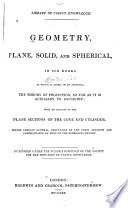 | Pierce Morton - Geometry - 1830 - 584 pages
...= x - -— = x tan. ( 45° + - — ) and cos. a \ 2 / therefore the lines pass through the origin, and are inclined to the axis of x at angles of 45° ± — . 327. Since the general equation includes all equations below it, the properties of the curve... | |
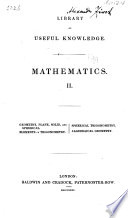 | Mathematics - 1835 - 684 pages
...= x - = x tan. I 45° + • — I and cos. a \ — 2 / therefore the lines pass through the origin, and are inclined to the axis of x at angles of 45° ± -^-. 327. Since the general equation includes all equations below it, the properties of the curve... | |
 | Edward Henry Courtenay - Calculus - 1855 - 526 pages
...o X i £ ing powers of 2). Hence y =±(.r — -i) is the equation of two straight lines, which arc asymptotes to the curve, and are inclined to the axis...on the right of the axis of y. Forming the value of — from the equation of the curve, we have CIX dy 2x3 + 3bxz + a3 fir 18 2 (*=» - «3r (* + rf which,... | |
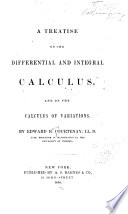 | Edward Henry Courtenay - Mathematics - 1856 - 524 pages
...equation with respect to y, and expanding, we get (. + *) = ±^(l — -- + -— , &c.J= ± (x — -b + terms involving powers of x). Hence y — ±(x —...on the right of the axis of y. Forming the value of -j- from the equation of the curve, we have dy — 2x dX 2(*2- a2)* (* + *)* which, placed equal to... | |
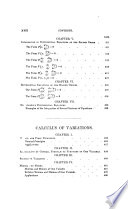 | Edward Henry Courtenay - Calculus - 1868 - 530 pages
...± x(l — -- + -— , &c.j = ± (x — -b + terms involving powers of x). Hence y = ±(x — - b) is the equation of two straight lines, which are asymptotes...on the right of the axis of y. Forming the value of — from the equation of the curve, we have dy__ 2J3 + 35x2 + a3 which, placed equal to zero, gives... | |
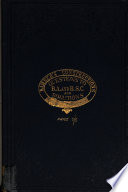 | Thomas Kimber - 1880 - 176 pages
...instructions given in Art. 290. In 2nd equation, x = + y, giving two lines intersecting in the origin, and inclined to the axis of x at angles of 45° and 135° respectively. 14. (1) Art. 314. (2) From the question, i/2 = 4ae; с •=• у — bx, we have by multiplying the... | |
 | Edward Albert Bowser - Calculus - 1880 - 424 pages
...(1 — ж8) =0 for multiple points. Ans. There is a double point at the origin, the branches being inclined to the axis of x at angles of 45° and 135° respectively. 4. Show that ауя—з^у—ах3 = 0 has no multiple points. 111. Cusps. — A cusp is a point of... | |
| |